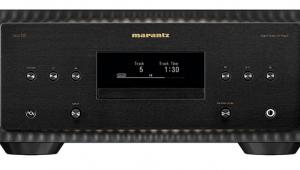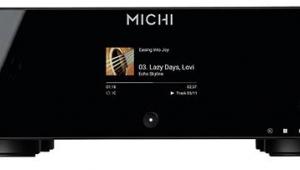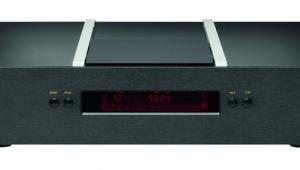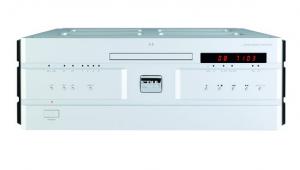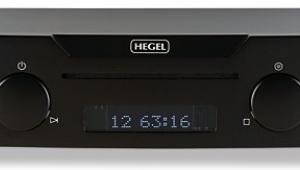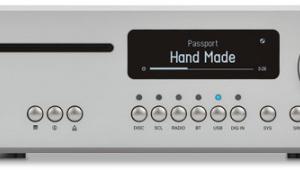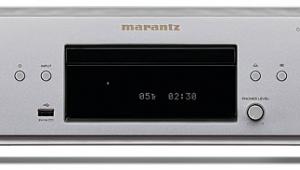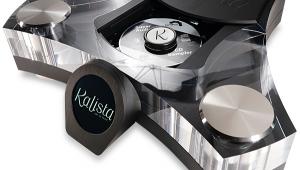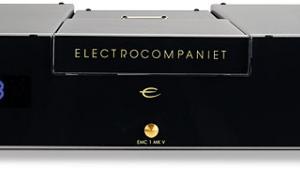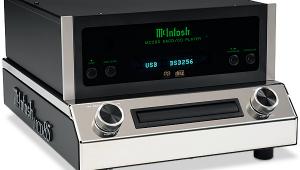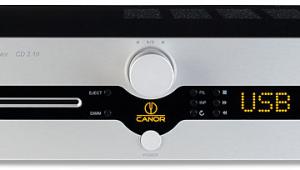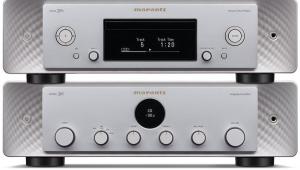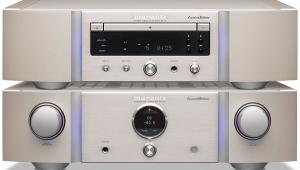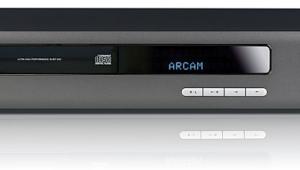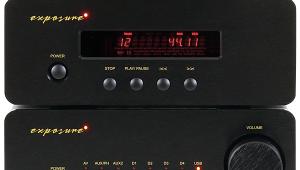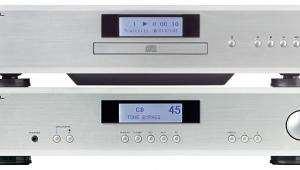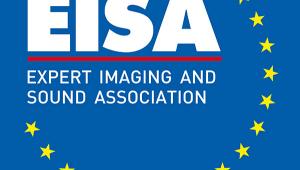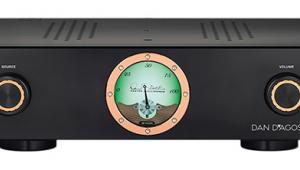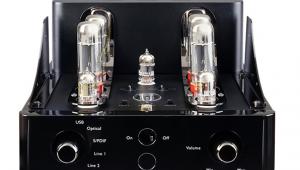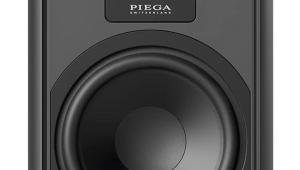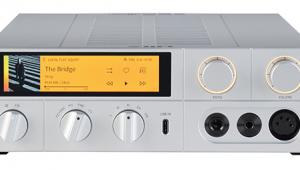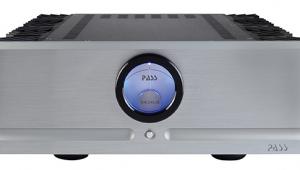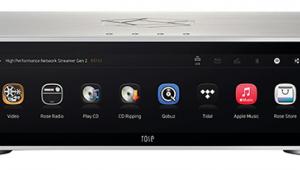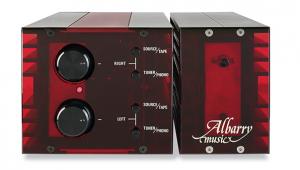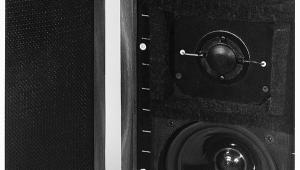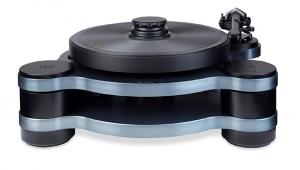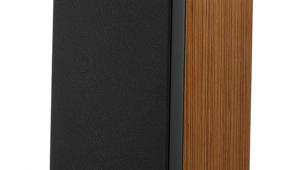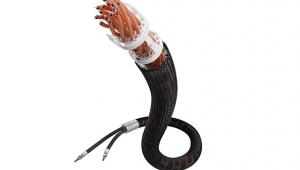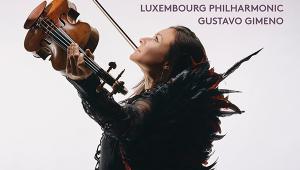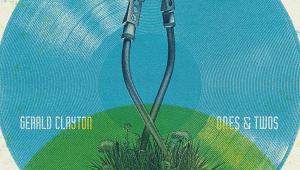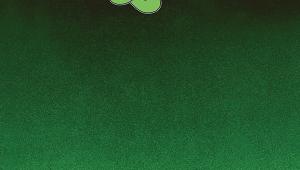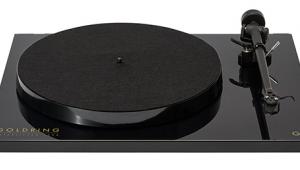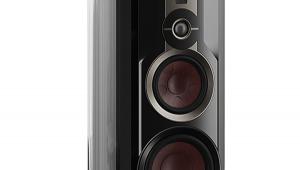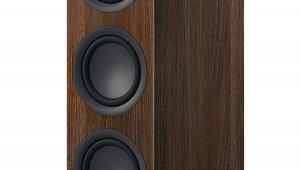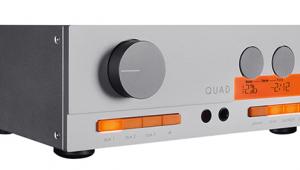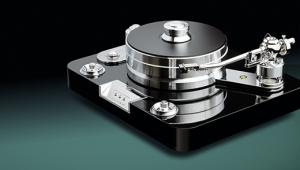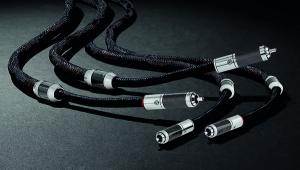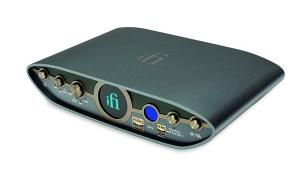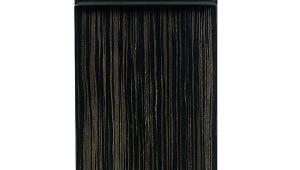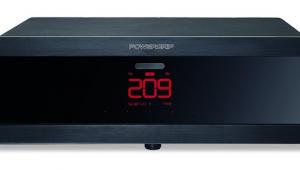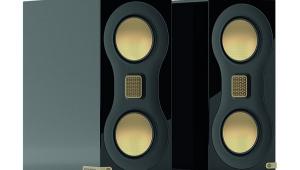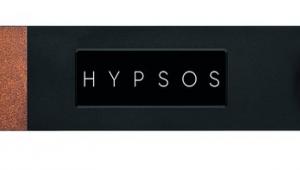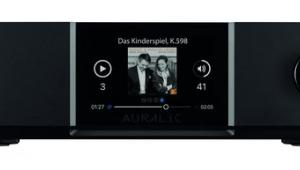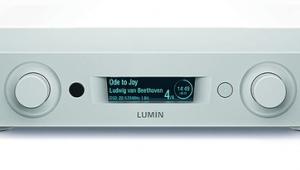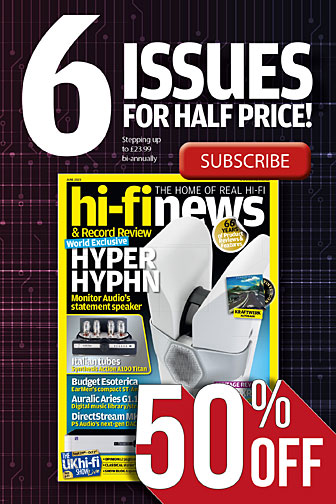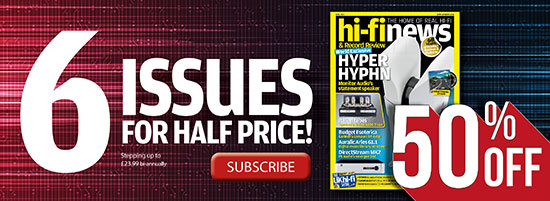Esoteric P 05 & D 05 (£4495/£4195)
Though CD players now bear a whiff of fin de siècle, this is a ‘golden age’ for silver discs. Despite sales pointing to CD’s demise, some of us still prefer CD to downloads and servers. Ironically, recent gems from Nagra, dCS and others recall the raft of sublime turntables of the late 1980s. Perhaps 10 years hence, CD will be to downloads what vinyl is to CD.
Pre-eminent amongst high-end players, for two decades, are Esoteric’s offerings; its latest two-box system might even be a future classic. Although calling the circa-£9k P-05 transport and D-05 DAC a ‘two-box’ combo ignores the series’ options, including an external clock. We tried the pair as is, but even in standard form, it completely eschews the simplicity of other transport/DACs (let alone all-in-one players) for it features a bewildering array of front-end-to-processor connections.
Because they’re so cleanly designed and possess nested menus instead of a plethora of buttons, the P-05 and D-05 do not betray their complexity until you look at the back panels. Toslink and coaxial (RCA) digital connections are present, but the adventurous can also use i.Link (FireWire, for you Apple jockeys) or dual AES XLRs with 110ohm balanced cables, with clocking via a BNC cable. For analogue output, the D-05 provides XLR balanced and single-ended through normal RCAs. What’s missing for completists is AT&T optical – the ‘forgotten’ connector.
TELEPHONE SUPPORT
A hand-held remote operates all functions, but keep manuals to hand because of the complexity. Quite why Esoteric, Chord, etc, provide perfectly admirable upsampling yet continue to include user-access to lesser rates – which no sane listener could ever prefer – I don’t know. Suffice it to say, Editor Miller had to talk me through the menus to get the FireWire working. Far better would be such players defaulting to optimum processing modes for each of the connection types.
Embodied in the P-05 are the benefits of not being constrained by drives bought from OEM sources. Esoteric makes its own robust mechanism, recalling the rock-solid CD transports from the 1980s. The all-new VRDS-NEO VMK-5 uses the P-03 series’ shaft-mounted pickup system and it promises ‘exceptionally quiet rotation’ thanks to its precisely-machined aluminium turntable. Even the loading is sexier than normal, thanks to a differential gear system that ensures smooth interaction between tray and disc clamp: no clunks here, my friends.
Output from the P-05 – PCM upsampled to 88.2kHz and 176.4kHz or untouched DSD from SACDs – feeds the D-05 for conversion through an AKM AK4397 Delta-Sigma DAC [see inside shot, p51]. Esoteric believes that this processor ‘combines the best properties of a 1-bit device and a multi-bit device.’ Inspired by the company’s five-chassis flagship player, the D-05 features a dual-mono power supply and analogue sections.
CLOCKING ON
Quickly ruling out the optical/coax S/PDIF modes, I used i.Link and the 110ohm dual AES connection, with ‘word sync’ clocking. How silly of me to think that it would be clear-cut, after the initial blast of Ryan Adams’ Heartbreaker SACD via i.Link proved nothing short of dazzling, rendering CD a pale imitation. More open, with silky treble, inarguably stripped of digital nasties, the sound led me back to vinyl to make sure I wasn’t imagining things. But the clincher was an early, single-layer SACD from the Bangles. Sounding like an LP, the treble in ‘Eternal Flame’ arrived without any teeth-grinding sibilance.
Comparing SACD with CD and i.Link against dual AES further convinced me of the superiority of the former mode of transmission. In every case, as 1-bit devotees would expect, the SACD sounded more natural/less artificial than the CD. Acoustic guitars possessed a more convincing woodiness and resonance, bass was more fluid even with smoother decay, while vocals were imbued with a lifelike quality scarily close to vinyl.
But then I made life harder for myself: I slipped in a gold CD. And another. And another. Gilded Eagles, Faith No More, Sinatra, Jose Feliciano and the Allman Brothers. To my dismay, I preferred them with the 110ohm XLR connection. Was I suddenly turning into one of those whackos who uses a different cartridge for every record label? I have no desire to start some Belt-like stampede toward gold CDs, nor to challenge the audible and technical superiority of a fully-re-clocked i.Link data stream. But the gold discs sounded warmer and more open via the XLRs, almost as un-digital as SACDs do through FireWire.
None of which should cause any concern: once you’ve mastered the owner’s manuals, you can simply switch transmission modes with a few button taps. And it’s worth it when you’re listening critically rather than casually – which I suspect means most of the time if you’re prepared to drop £9k on a CD player.
INVISIBLE TOUCH
Regardless of mode, the Esoteric pairing deserves extra praise for two things: stage dimensionality – in all planes – and transient attack. The former is assisted by a dual-mono architecture, eliminating any crosstalk and letting all of the directional clues reach the listener. This is one of the most open-sounding, invisible players I can name. It can fill your room with nearly the grace of a Denon 103D moving-coil...
Transient attack seems to be one of digital’s strengths, but often with exaggeration, some unrealistically heightened sense of precision. The Esoteric does it without suggesting artifice, not least because the ensuing decay of the notes is so smoothly progressive. If you are the sort who salivates over blindingly fast electric guitar breaks from Eddie Van Halen, or punchy trumpet solos, this package will render you breathless.
VERDICT
This pairing does for CD what upscaling players do for DVDs: it extracts clearer, more focused, more natural sound. Unexpected, though, was rediscovering SACD and gold CDs, here fulfilling all of their unrealised potential. Esoteric’s duo wins on every level: sound quality, useability, digital input options, display info, build quality. It is, purely and simply, exceptional.
Originally published in the March 2009 issue

